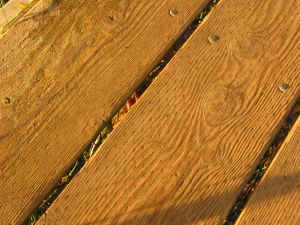Using reclaimed timber for home improvement projects is very popular at the moment. The use of reclaimed timber, for lintels, floorboards, mantelpieces and other exposed features, can really add character to your home, particularly if you live in a period property. You can buy reclaimed timber which has been refinished ready for reuse, but this can be expensive. A much cheaper option is refinishing the timber yourself, saving money with a bit of your time and care.
Finding Reclaimed Timber
Reclamation yards are doing big business these days, and there is almost certainly one to be found near to where you live. These yards are in the business of turning materials which would once have been thrown away into usable materials. This does, however, mean that you will be paying retail price. It is possible to find cheaper reclaimed materials by speaking directly to builders, searching online auction sites or freecycle-style websites. Even better, reclaim and reuse the timber in your own home, instead of throwing everything straight into the skip.
De-nailing Timber Beams
Timber joists that have been reclaimed will often have the nails used to fix the floorboards still in place. Removing them is a real chore, but very easy to do if you have the right tools.
Lay the joist down flat, on its edge. Using a pry bar for large nails, or a claw hammer for smaller nails, work along the timber beam, removing each nail as you come to it. Rusted nails may snap off as you try to pry them out. If this is the case, hammer the shaft flush and then use a punch to knock the nail below the surface of the wood.
Refurbishing Floorboards
 When reclaiming floorboards yourself, the main problems are lifting the boards without breaking them, warped boards and damaged edges. There is little you can do about a snapped board, or a board which is badly warped, but repairing edges can certainly be attempted with a circular saw or router.
When reclaiming floorboards yourself, the main problems are lifting the boards without breaking them, warped boards and damaged edges. There is little you can do about a snapped board, or a board which is badly warped, but repairing edges can certainly be attempted with a circular saw or router.
If you are simply trimming the edge using a circular saw, you just need to mark a straight line along the edge, clamp the board securely and carefully cut away the damaged timber. You may need to trim undamaged boards if you want to keep all of the floorboards a uniform size. Sand the edge with rough sandpaper once you have completed the cut.
To tidy the edge using a router, attach a straight cutter and a guide to the tool, or clamp a piece of batten along the edge to act as a guide for the router. Keeping the router hard up against the guide, run it along the edge in a smooth motion. You will almost certainly need to sand the edge once you have finished with the router.
Finishing Reclaimed Timber
In most cases, you will be using reclaimed timber to add character. Don’t be too concerned with making each piece perfect, as it is often the small marks, scars and cuts which give the timber character. Your choice of finish depends on where the timber will be used, but can range from wax, to stain or varnish.
If you are worried about using reclaimed wood which has some signs of woodworm, it is a good idea to take extra prevention steps. You can buy insecticidal and fungicidal pellets which can be inserted into the wood easily. You simply drill holes to the size of the pellets, in the face which will be hidden if possible, and push the pellets into the holes. Be aware that woodworm damaged timber, even if it has been treated, probably shouldn’t be used as load-bearing features.







